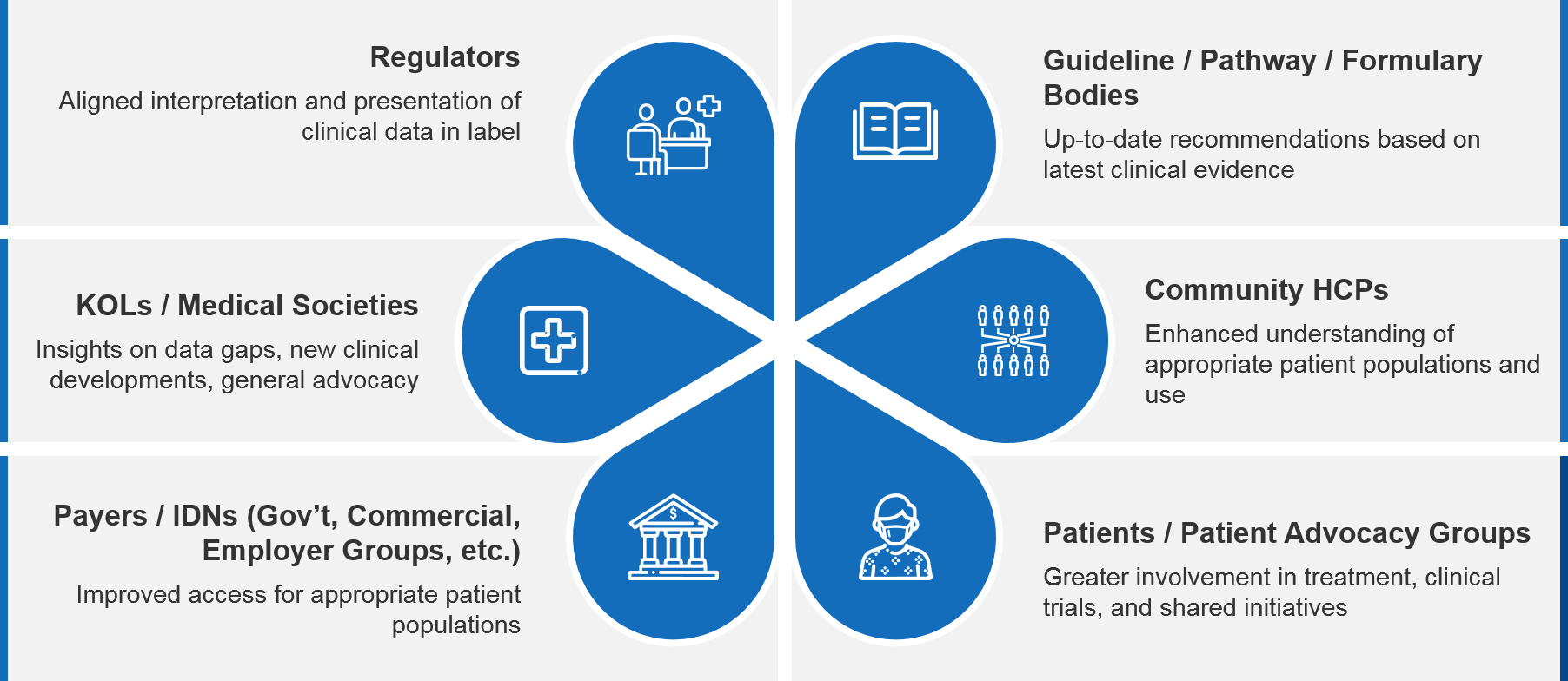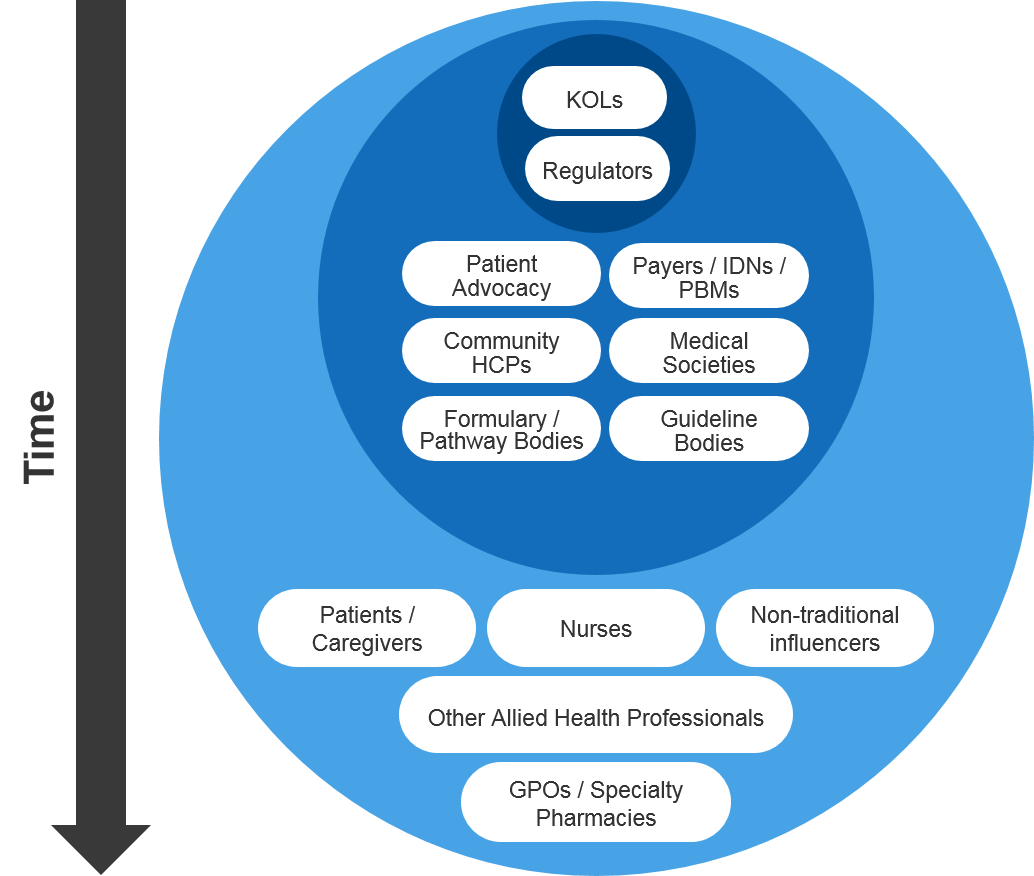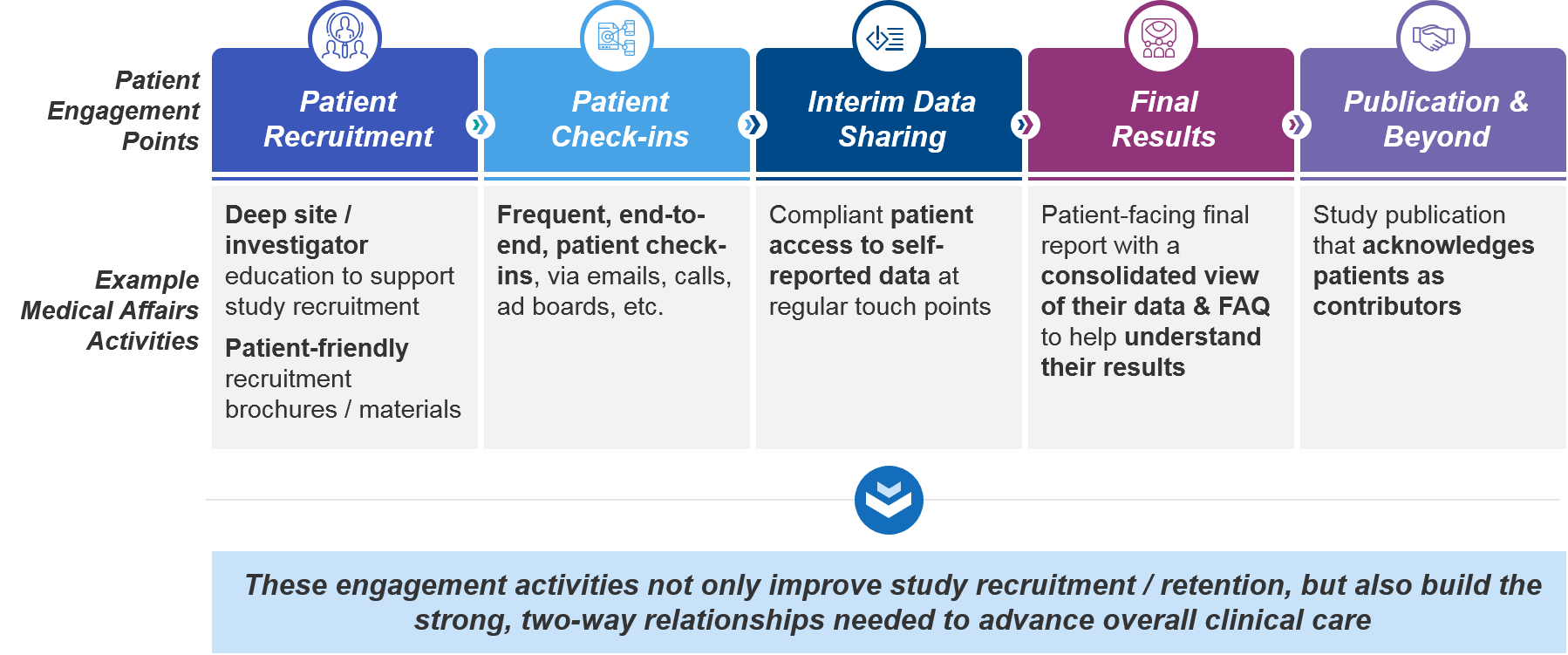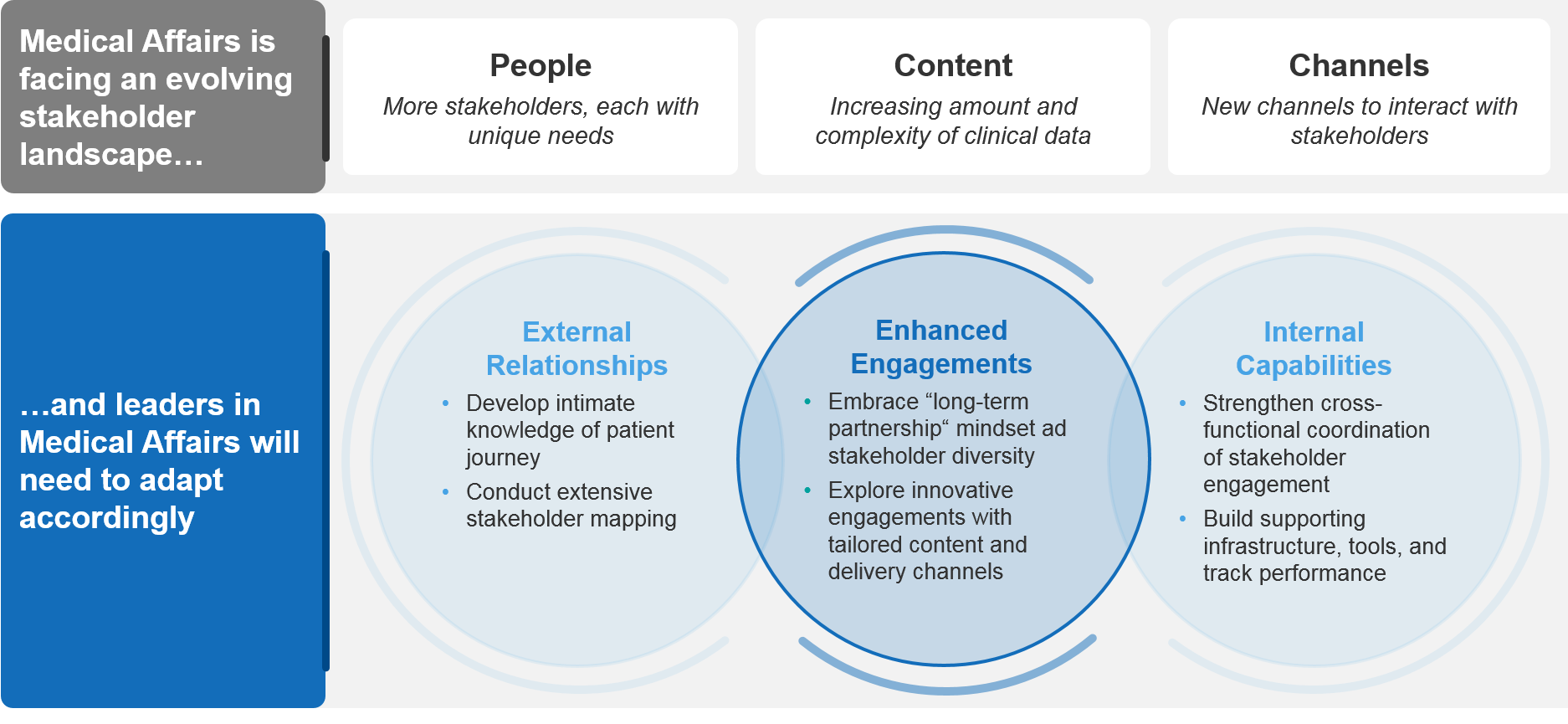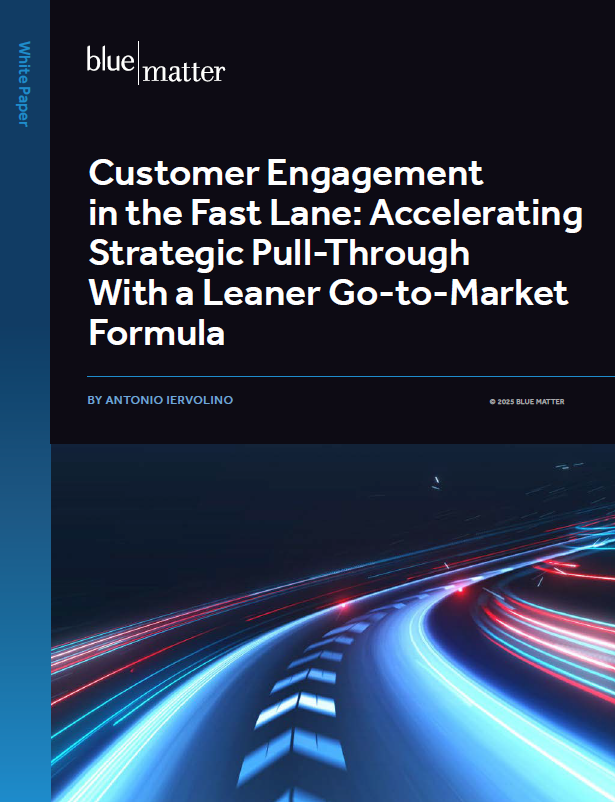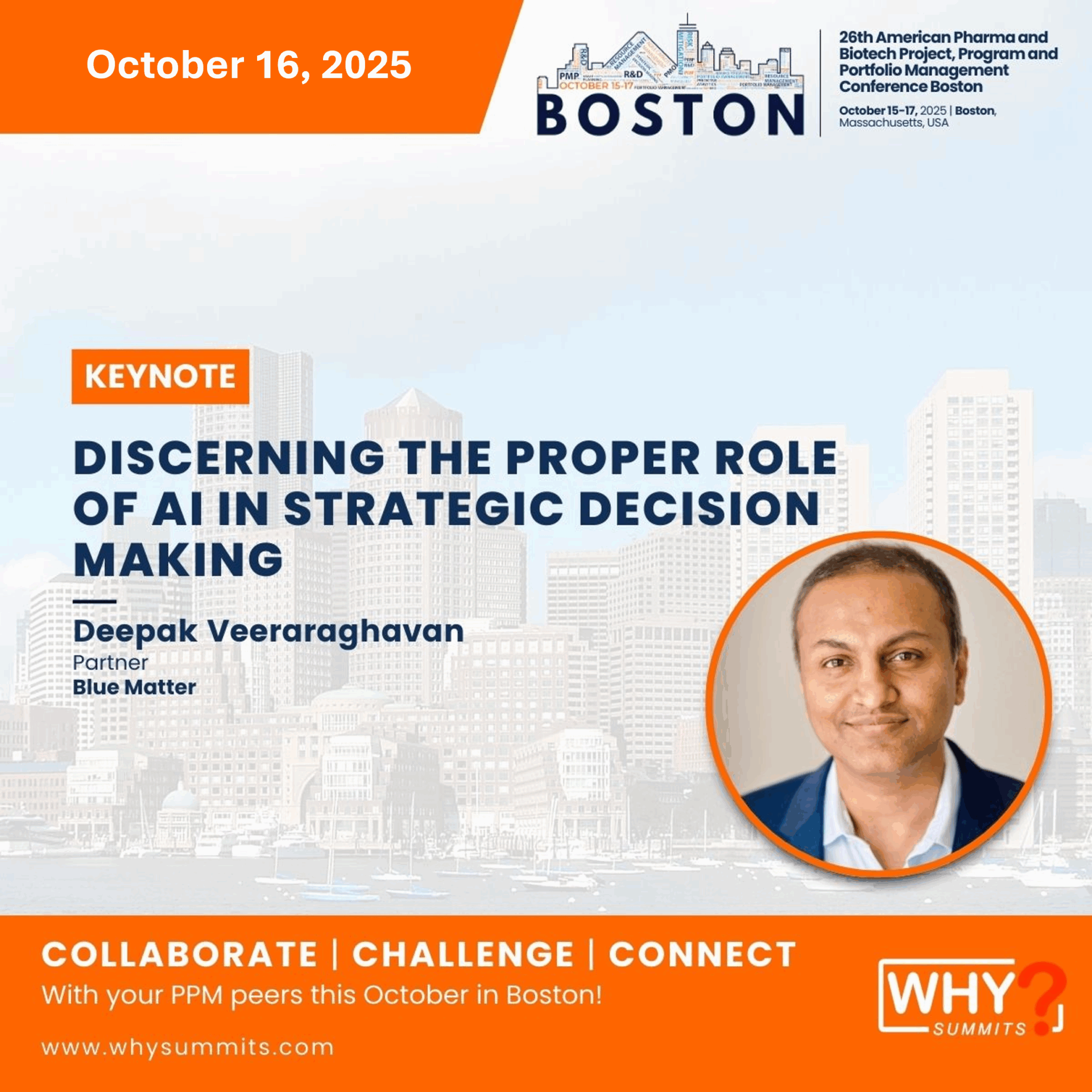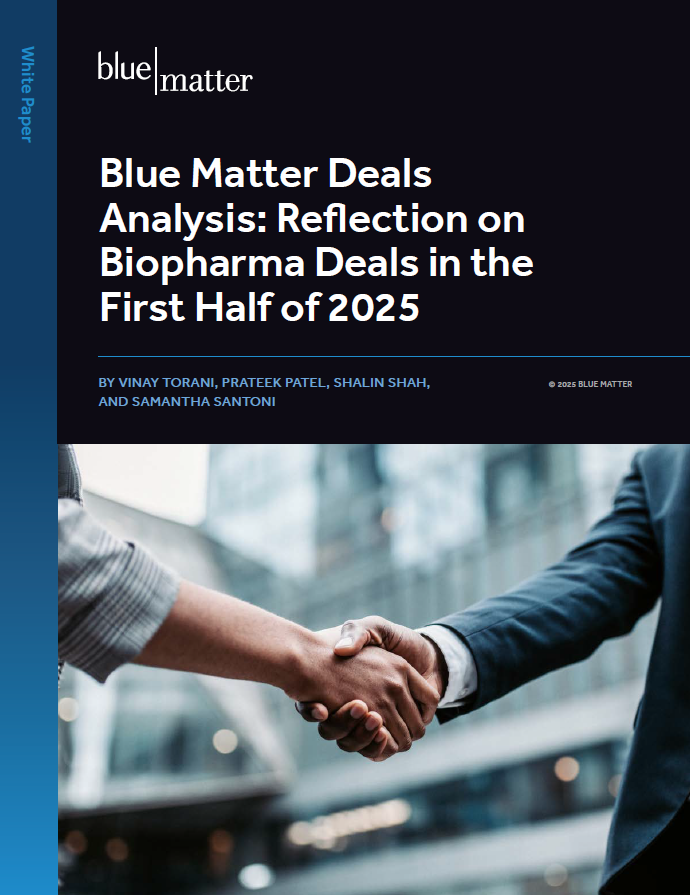
In this series of articles, we have discussed how the role of Medical Affairs has been changing in both scope and function in recent years. Driven by various trends, Medical Affairs’ strategic importance and scope of activities has expanded, transforming the department into a central hub for insights generation, evidence generation, and strategic planning. In addition, Medical Affairs has been evolving the tools and techniques it uses to communicate with its stakeholders in a rapidly changing environment.
In this final article in our series on the evolving role of Medical Affairs, we discuss how stakeholder engagement is transforming, why it’s changing, how it’s changing, and what these changes mean for Medical Affairs teams. We provide an overview of traditional Medical Affairs stakeholders, and describe how both those stakeholders and the methods used to engage them have diversified.
Medical Affairs stakeholder engagement, past to present
The traditional role of Medical Affairs (MA) has been to educate and disseminate the latest scientific and clinical knowledge, primarily to regulators and key opinion leaders (KOLs). KOLs have been particularly important to engage, as they are an efficient channel for insight gathering and data dissemination, and engaging KOLs allows even small MA teams to effectively scale their reach. As a result, MA has tended to engage with a relatively homogenous set of stakeholders within each field, choosing them based on a handful of core metrics such as clinical trial activity, publication record, academic affiliation, and historical organizational knowledge.
However, the healthcare ecosystem has increased in complexity and sophistication in recent years. Unlike in the past, where HCPs had significant independence in their treatment decisions, today’s landscape has many more influences over treatment choice. Payers and pharmacy benefit managers (PBMs) have become increasingly sophisticated, employing clinical and economic experts to devise complex access and utilization management tools to control healthcare costs. Physicians are now also typically employees of larger practices or hospital systems with formularies and protocols in place to control prescribing and ensure standardized, cost-efficient care. Other players include guideline bodies, which help physicians navigate increasingly complex treatment algorithms, and patient advocacy groups. These new players, especially patient advocacy groups, have grown significantly in size, engagement, and influence across the therapeutic ecosystem, catalyzed in no small part by social media and other digital channels.
All of these parties require education and other MA services, and so MA has adapted to engage a broader range of stakeholders, including medical societies, payers, patient advocacy groups, and more. Engagement with this more diverse set of stakeholders brings many benefits (see figure 1), and as this trend will continue into the future, MA leaders must be prepared to meaningfully engage this increasingly large and complex stakeholder landscape to establish mutually beneficial partnerships.
Figure 1 – Impact of Effective Medical Affairs Stakeholder Engagement
Future trends for Medical Affairs stakeholder engagement
There are three broad trends in MA stakeholder engagement, centered around who is being engaged, what content is being delivered during engagements, and the channels through which these engagements occur.
Who is being engaged?
As we have discussed above, MA has gone from engaging only the top handful of experts to a much wider range of stakeholders across a variety of fields (see figure 2). These stakeholders will often have very different needs, which MA must be prepared to balance.
Newer stakeholders include patients, caregivers, and allied health professionals. Patients and caregivers need support to navigate an increasingly complex healthcare landscape and to understand, in simple terms, how and why they are taking specific medications. Allied health professionals such as nurse practitioners and physician assistants are also playing an increasingly large role in patient care, and require education on the clinical nuances of medications and how they relate to dosing, administration, and side effect management.
As we look towards the future, there are still new classes of stakeholders emerging. One of the most prominent is “non-traditional KOLs”, people who often come from non-clinical backgrounds and have influence over large and broad audiences on social media. How to engage with these non-traditional KOLs, and specifically the role of Medical Affairs in these engagements, is an open question that is likely to be an area of ongoing evolution.
Figure 2 – Growth in the Number of Medical Affairs Stakeholders Over Time
This increased diversity in stakeholder fields brings the need for sub-specialization within MA, as it is no longer possible for a single MA representative to stay abreast of so many individual interests, perspectives, and market needs. As a result, some MA teams are forming sub-specialized groups, such as those focused on managed care, biomarkers, patient advocacy, health policy, RWE / HEOR, and others.
What content is being delivered?
MA has become a hub for evidence generation, which we discuss in detail in Part III of this series. In short, the proliferation of accelerated approvals has left data gaps that must be correspondingly filled by additional studies; payers and regulators are demanding more health economic data; and real-world evidence is becoming increasingly accepted across the healthcare ecosystem. As the healthcare landscape is increasingly shaped by data outside of randomized controlled trials, MA has begun to serve as a critical strategic hub for evidence by integrating and packaging data from many sources to meet the unique educational needs of each stakeholder group.
In parallel, the format of Medical Affairs content is also changing. Scientific and clinical data has traditionally been communicated via “static” formats, such as formal presentations or publications. However, data can now also be delivered in “self-serve” formats that enable stakeholders to interact with the data directly, allowing them to, for example, segment data based on comorbidities or adverse events. In addition, modern approaches to adult learning suggest that learners absorb information better if presented in a series of smaller pieces interspersed with live interaction. As a result, more information is being communicated in bite-sized learning packages, and educational content in general is being re-engineered to support discussion and practical applications of new knowledge.
Which channels are used for engagement?
In recent years, the methods of engaging stakeholders have also evolved. The most obvious change is the rise in virtual communication (Zoom, Twitter, etc.), resulting in many stakeholders preferring virtual information over live interaction. Because of these new channels, stakeholders can now have a much broader range of desired communications that MA must keep in mind during their engagement.
This variety in communication channels and presentation formats means that MA teams must be able to communicate fluently in a variety of styles. They must develop excellent virtual presentation and facilitation skills, and know how to flex content to fit the engagement channel. Correspondingly, MA leaders need to ensure that their teams have the appropriate training and skills to deliver the right content, through the right channel, to the right stakeholder.
Implications for stakeholder engagement going forward
The Medical Affairs leaders of tomorrow need to navigate and engage with an increasingly complex and sophisticated stakeholder landscape. Stakeholders come from a broader range of fields, data is increasing in volume and complexity, and new engagement channels are gaining traction. To effectively adapt to these trends, MA leaders should first consider the stakeholder journey itself, and then use that understanding to inform their engagements going forward.
Develop intimate knowledge of the stakeholder journey
As the stakeholder landscape increases in size and complexity, careful stakeholder mapping becomes even more important. MA teams should work to identify stakeholders across the healthcare ecosystem, and then consider their unique emotional journeys and pain points. This is only possible through first empathizing with these stakeholders and then co-creating their journeys so that MA teams can uncover meaningful engagement opportunities.
At the same time, a more nuanced view of differences between individual stakeholder journeys will bring with it the understanding that opportunities should be equitable, diverse, and inclusive. As underrepresented stakeholders come into focus, MA needs to ensure that it engages with a range of races, genders, career ages, and more to allow for an important variety of perspectives on the landscape.
Shift the engagement mindset towards co-creation partnerships
As stakeholder engagement changes, the MA mindset surrounding stakeholder engagement should change as well. Stakeholder engagement should not be viewed simply through the lens of information exchange, but instead should evolve into an opportunity for co-creation. For example, MA can work with payers to design a study to evaluate the use and impact of a new drug within their specific patient population. Co-creation can also extend to co-authorship, as MA teams can work with patients and other stakeholders to create plain language summaries of key medical / scientific publications, short articles aimed at a lay audience that serve as companions to the full journal publication. Such co-creation brings with it a number of benefits, including the ability to create materials or design trials that better reflect the needs of the stakeholders, and offers deeper engagement overall for both parties.
Explore innovative stakeholder engagement approaches
As stakeholders, content, and engagement channels all evolve, MA should take advantage of the new stakeholder relationships to explore innovative methods of delivering new engagements. These approaches should be done in a tone that resonates with the stakeholders (for example, patient-friendly or scientifically oriented), and should take their preferred methods of communication into account. Some MA teams have begun to put innovative engagement approaches into practice, often with successful results (see figure 3).
Figure 3 – Innovative Ways Medical Affairs Teams Are Exploring to Empower Patients in Clinical Trials
Cultivate cross-functional relationships
With increasing stakeholder engagement comes both an increased burden on MA and the potential for external stakeholders to be asked to engage on several topics at once by the same manufacturer. MA teams must internally cultivate cross-functional relationships to ensure that stakeholders are being strategically engaged in ways that complement organization-wide activities, and that overlapping audiences are not being overburdened or receiving redundant information. This reduces the load on both MA and stakeholders, ensuring a more efficient and rewarding engagement experience for both parties.
Establish necessary infrastructure
The increase in both the number and needs of stakeholders, combined with necessary corresponding growth in both Commercial and Medical Affairs organizations, creates an even more pressing need for proper supporting infrastructure. The first step is to support MA training and development, to make sure that MA teams are able to deliver effective content tailored to each stakeholder group across both in-person and virtual channels. In addition, efficient and successful cross-functional coordination will require specific tools. For example, defined cross-functional field coordination models supported by effective customer relationship management software integrations can help facilitate effective field engagements. Finally, careful engagement metric tracking and reporting are also critical to identifying which approaches are more or less effective and ensuring continual improvement in stakeholder engagement approaches.
Conclusion
MA has seen an incredible transformation in recent years. It is expanding its ability to improve patient outcomes by becoming a centralized hub that deals in insight generation, data generation, strategic planning, and stakeholder engagement, which is transitioning from a primary focus on academic stakeholders from a narrow group of fields to a much broader, more diverse effort. With this change in breadth and number of stakeholders comes a necessary change in engagement approaches, as MA must deal with diversity in motivation, needs, preferred engagement channels, and more. Though today’s stakeholder ecosystem is more complex than ever before, Medical Affairs teams that are able to effectively navigate this new landscape will be able to shepherd better care and outcomes for their patients.
Figure 4 – Medical Affairs’ Changing Landscape and the Need to Adapt
